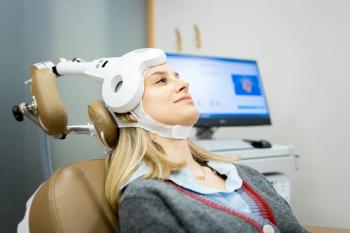
- Psychiatric Times Vol 29 No 9
- Volume 29
- Issue 9
The Role of Gender in Disease Expression: A Literature Review
Review on the roles of gender in connection with premenstrual dysphoric disorder, OCD, psychosis, and other mental disorders.
de Mathis MA, de Alvarenga P, Funaro G, et al. Rev Bras Psiquiatr. 2011;33:390-399.
OCD is made up of heterogeneous subtypes-one such is gender, which plays a relevant role in phenotypic expression. In this literature review, the researchers looked at 63 studies to determine the gender differences in clinical, genetic, and familial aspects of OCD. They found that males were more likely to be sin-gle; to present with an early onset and chronic course; and to have greater social impairment, more sexual-religious and aggressive symptoms, and greater comorbidity with tic and substance use disorders. Females had more contamination/cleaning symptoms and greater comorbidity with eating and impulse control disorders. Although the studies are inconclusive, they suggest that gender plays a role in disease expression of OCD.
For the next study,
Epperson CN, Steiner M, Hartlage SA, et al. Am J Psychiatry.2012;169:465-475.
Premenstrual dysphoric disorder was included in Appendix B of DSM-IV as “Criterion Sets and Axes Provided for Further Study.” A task force of experts has now been convened by the Mood Disorders Work Group for DSM-5 to review the literature on premenstrual dysphoric disorder and provide recommendations regarding the disorder for DSM-5. After lengthy discussions and evaluation of the data, the 8-member task force has proposed the inclusion of premenstrual dysphoric disorder as a full category in DSM-5. Its inclusion will benefit the minority of women who experience significant monthly distress by encouraging evidence-based research that will, in turn, provide better treatment modalities and thus better outcomes.
For the next study,
Kanaan RA, Allin M, Picchioni M, et al. PLoS One. 2012;7:e38272.
Diffusion tensor imaging was used to determine gender differences in white matter microstructure. Analysis of findings showed high levels of dimorphism between the brains of men and women: men had higher fractional anisotropy (FA) in cerebellar white matter and in the left superior longitudinal fasciculus; women had higher FA in the corpus callosum. The differences were substantial, which suggests that gender may be a potentially significant confounder. Higher FA may represent more “efficient” white matter organization.
For the next study,
Seedat S, Scott KM, Angermeyer MC, et al. Arch Gen Psychiatry.2009;66:785-795.
The decrease in gender differences in anxiety and externalizing disorders has led to interest in the “gender roles” hypothesis. This hypothesis posits that as the role of women improves, the differences narrow. Seedat and colleagues undertook a time-space variation study of mental disorders based on cohorts from the WHO World Mental Health Survey Initiative, which was a survey of community-dwelling adults in Africa, the Americas, Asia, Europe, the Middle East, and the Pacific. They found that gender differences in anxiety, mood, externalizing, and substance disorders remained relatively stable despite the changes in female gender role over time. However, the findings suggest that in more recent cohorts, there were significant gender differences in major depression, intermittent explosive disorder, and substance disorders.
For the next study,
Seeman MV. Womens Health (Lond Engl). 2012;8:215-224.
Seeman reviews the evidence for gender differences in the presentation of psychosis. She finds subtle differences in several areas, which have important treatment implications. Mental health programs that address the different needs of the two sexes are required. In particular, the mother-child dyad presents unique challenges, and services that provide targeted care for mothers with schizophrenia are crucial-the mother’s health will impact the health of her child.
For the next study,
Simpson J, Kelly JP. Behav Brain Res. 2012;229:289-300.
In this report of preclinical study results, Simpson and Kelly review the effects of gender on depression- and anxiety-like symptoms, learning and memory, and stress response in rats, as well as sexual dimorphisms in monoamine neurotransmitter and neurotrophic factor levels, neurogenesis and plasticity, and responsiveness to drugs of abuse. Compared with male rats, female rats had greater baseline activity levels and also responded more actively in conditioning paradigms, but they were somewhat impaired in tests of spatial memory. Depending on the nature of the stressor, female and male rats had different responses on baseline and stress-induced hypothalamic-pituitary-adrenal measures. Differences were also seen in the response to psychotropics, which may be due to differences in neurotransmitter activity and transporter and receptor expression. The impact of the estrous cycle on behavior, neurochemistry, dendritic growth, and drug response was determined using ovariectomized and intact female rats. Study data from both male and female rats can be translated to gender differences in humans and used to identify potential treatment strategies.
For the next study,
Trent S, Davies W. Biol Psychol. 2012;89:1-13.
There are inherent gender differences across neurobiological domains such as brain structure, neurochemistry, and cognition. Evidence also shows gender differences in prevalence, clinical features/progression, neurobiology, and pathology of disorders. Trent and Davies discuss the mechanisms that underlie gender differences. They also consider to what extent these differences affect attention and impulsivity and the role that gender plays in modulating disorders such as ADHD, autism, and addiction. Identifying novel sex-modulated molecular targets may help in the development of more effective therapies for attentional/impulsive disorders.
For the next study,
Wynn R, Hiseth MH, Pettersen G. Int J Womens Health. 2012;4:257-263.
Research has primarily been focused on psychopathy in men. Thus the question remains of whether psychopathy exists in women and, if so, how does it manifest itself. The authors review the literature on gender and psychopathy and consider the causes of psychopathy and the importance for women. Diagnostic tools, such as the Hare Psychology Checklist–Revised, are examined to gauge their effectiveness on the basis of gender. The similarities as well as the differences between the sexes are discussed as well as prevalence, behavioral expressions, comorbidity, progression, and treatment.
Articles in this issue
over 13 years ago
Alcohol Disorders: Practical Tips From New Researchover 13 years ago
Top Research Findings That Can Change Clinical Practiceover 13 years ago
Debate: Is It Worth Saving the Bereavement Exclusion in DSM-5?over 13 years ago
Debate: Let the Bereavement Exclusion in DSM-5 Dieover 13 years ago
Intimate Portraits: Psychotherapists in Their Own Work Spaceover 13 years ago
Albert Ellis, PhD (1913 - 2007)over 13 years ago
Magic Tricksover 13 years ago
Working With Transgender Personsover 13 years ago
How Gender Plays a Role in Disease ExpressionNewsletter
Receive trusted psychiatric news, expert analysis, and clinical insights — subscribe today to support your practice and your patients.











